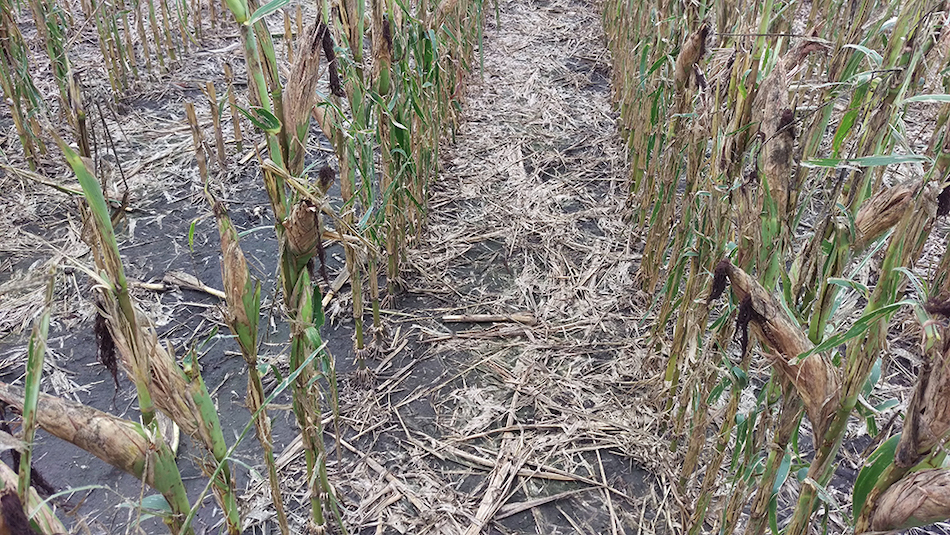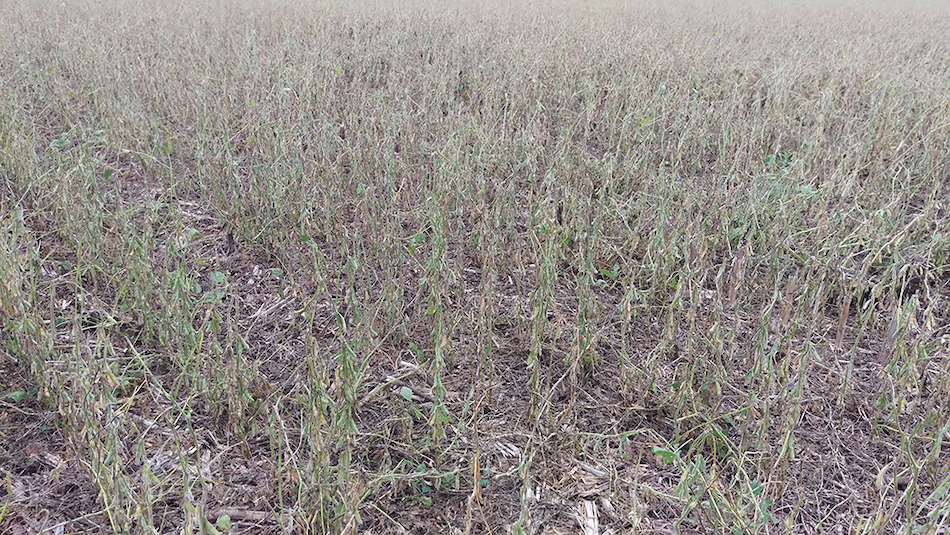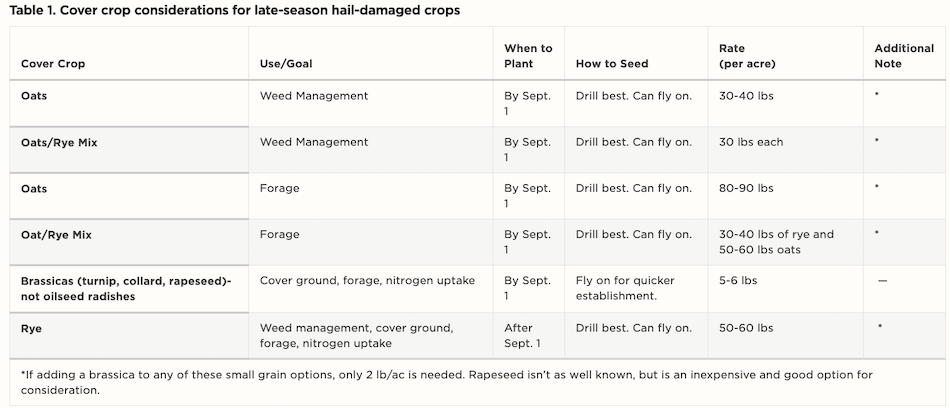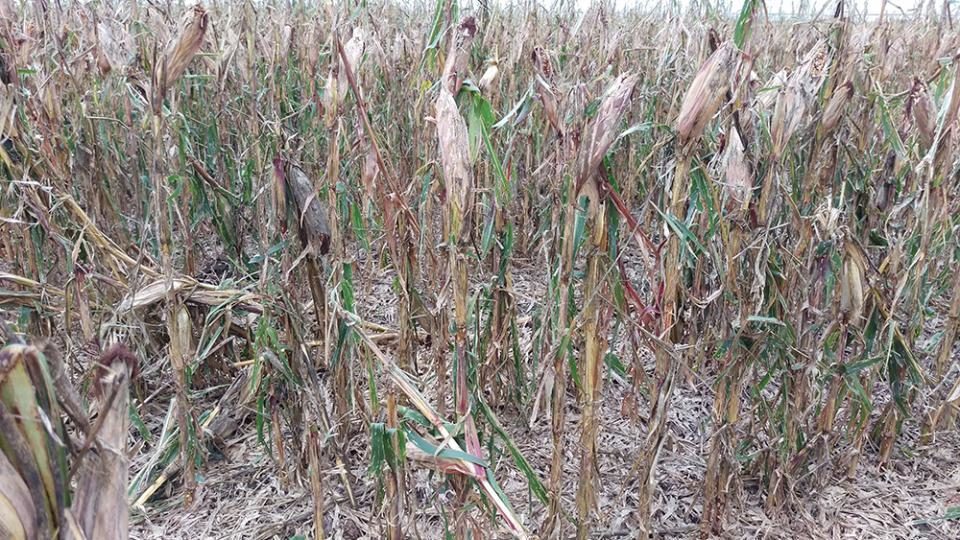Late-season hail has again impacted fields across Nebraska. Growers are asking for cover crop information for weed management, excess nitrogen uptake, and forage options.
Before Seeding a Cover Crop
Always be sure to check with your crop insurance agent before seeding a cover crop into hail-damaged fields. It’s also important to check replant and rotation restrictions regarding the herbicide program you used. You can plant a cover crop before the restriction at your own risk if you are NOT grazing or using the cover for forage. It’s also important to check on the forage, feed, and grazing restrictions for row crop herbicides in the event you need to consider a field for silage or grazing residue.
Cover Crop Options
The following photos show three situations that we may be seeing now to varying degrees:
Corn crop with only ear and stalk remaining (top of page),

Seed corn field that may or may not be destroyed, depending on company determination (above), and soybean field where stems are dying and pods aren’t filling (below).

We’re hearing several concerns from growers. One is that weeds are emerging in these hail-damaged fields and they’d like to get a cover down to reduce light interception and help manage weeds. They’re also concerned that there’s nitrogen left in the soil that went unused by damaged crops or that has been scavenged by the soybeans. A cover crop can use that nitrogen and keep it in upper soil layers instead of allowing it to leach. Some growers are also thinking about the forage value of soybean that won’t be harvested or the cover crop planted.
In general, we’re at an interesting time for making cover crop decisions. Typically we use September 1 as the divider between planting small grains such as oats that will winterkill and winter hardy cereals such as rye or triticale (planted after September 1). Even with brassicas such as turnips, collards, or rapeseed, we’d recommend the cutoff for seeding to be within the next two weeks. Because of this time frame, mixes may be beneficial because they’ll take advantage of whatever weather we have for the rest of the season. Simple, inexpensive mixes may allow for at least something to become successfully established.
Your cover crop seed supplier can help with cover crop options and seeding rates. The following are a few recommendations:

Other Forage Considerations
Earlage: For fields where the ear is now the top-most plant portion, silage is not a good option, but earlage can be. This resource from North Dakota State University, Harvesting, Storing and Feeding corn as Earlage, provides good information on earlage.
Grazing: Whenever possible, attempting to harvest the corn first would be best. It’s not a good idea to graze the corn with ears on the stalks. A better option would be to harvest the corn and graze afterward, following considerations that we used for the downed corn situation in 2017. See Down Corn: Problem or Opportunity for Cattle Producers?
Silage: The following are good silage resources: Making Silage from Hail Damaged Corn, Silage Considerations (UNL BeefWatch) and videos from the Silage for Beef Cattle Conference.
Conclusion
There are a variety of options to consider now depending on the grower’s specific field situation and goals. A cover crop can help remove excess nitrogen, cover the ground to aid in weed management, and provide a forage option. Regardless of the goal, timing matters now, and because of that, mixes may be a better option to ensure at least something gets established to meet the goals.







Post a comment
Report Abusive Comment